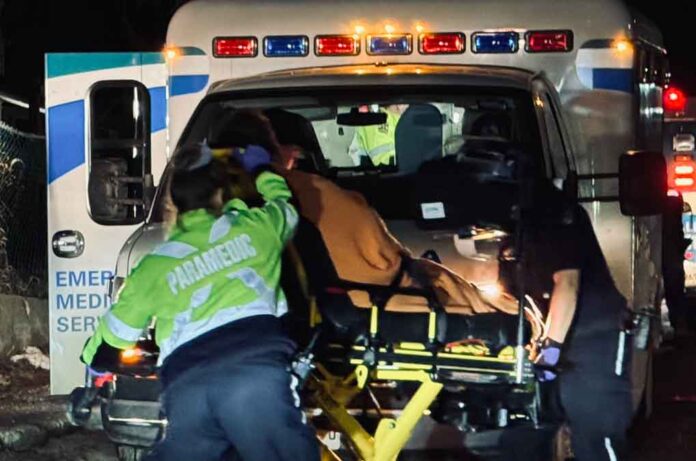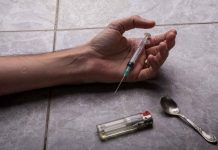Thunder Bay Sees Increase in Xylazine Contamination
THUNDER BAY – NEWS – Thunder Bay’s illicit street drugs are increasingly contaminated with Xylazine, an animal sedative typically used by veterinarians to sedate large animals like horses and cattle, according to the NorWest Community Health Centres.
This frightening trend raises significant health concerns as Xylazine misuse can lead to severe side effects including diminished pain sensitivity, reduced consciousness, slower heart rates, and decreased breathing and oxygen levels.
What is Xylazine and why are drug dealers using it?
Xylazine, commonly known as an animal tranquilizer, is used in veterinary medicine to sedate horses, cattle, and other large animals. Its primary effects include sedation, muscle relaxation, and pain relief. However, its use has extended beyond veterinary applications, finding its way into the illicit drug market. Here are the key reasons why drug dealers are incorporating Xylazine into street drugs:
- Cost-Effectiveness: Xylazine is relatively inexpensive and readily available, making it an attractive option for drug dealers looking to extend their products inexpensively.
- Potency Enhancement: When mixed with other substances, Xylazine can enhance the sedative effects of opioids like heroin and fentanyl. This combination can make the drug’s effects more intense, potentially increasing its desirability among users seeking a stronger high.
- Filler Material: Dealers use Xylazine as a filler to increase the volume of their drug products, allowing them to sell more doses from the same quantity of the primary drug. This practice boosts their profits but adds significant risks for users.
- Physical Dependence: There is evidence to suggest that Xylazine can induce physical dependence in users, contributing to its appeal among dealers as it may increase repeat demand for their tainted products.
Health Risks and Concerns:
The inclusion of Xylazine in street drugs introduces several health risks. Its effects on humans, given that it’s not intended for human use, can be severe and include:
- Respiratory depression: Xylazine can significantly slow down breathing, leading to hypoxia (low oxygen levels in the body) or even respiratory arrest.
- Decreased heart rate: It can slow down the heart rate, posing risks of cardiac arrest in severe cases.
- Skin ulcers and infections: Xylazine has been linked to severe skin ulcers and infections at injection sites, which can be difficult to treat and may lead to more serious health complications.
- Overdose risk: When mixed with opioids, the risk of overdose increases significantly due to the combined respiratory depressing effects of both substances. Unlike opioid overdoses, Xylazine overdoses do not respond to Naloxone (Narcan), making them particularly dangerous.
How can drug users protect themselves?
Illicit drug use carries inherent risks, especially with the increasing prevalence of substances like fentanyl and xylazine contaminating street drugs. While the safest approach is to avoid illicit drug use altogether, harm reduction strategies can help protect those who do use. Here are some practical measures:
- Use in the Presence of Others: Never use drugs alone. If an overdose occurs, having someone nearby can save your life. Ensure at least one person present is equipped to call emergency services and administer first aid or Naloxone if needed.
- Carry and Know How to Use Naloxone: Naloxone can reverse opioid overdoses but not those from non-opioids like xylazine. However, because many street drugs are mixed with opioids, carrying Naloxone (Narcan) and knowing how to use it is crucial.
- Test Substances Before Use: Utilize drug-checking services or test strips to check for the presence of fentanyl, xylazine, or other harmful additives. While not foolproof, these tools can provide an additional layer of safety.
- Start with Smaller Doses: If using a new batch of a substance, start with a smaller dose than usual to test its strength and potential effects. This practice, known as “start low, go slow,” can help mitigate the risk of overdose.
- Adopt Safer Consumption Practices: If possible, opt for safer methods of consumption that reduce the risk of overdose and infection, such as snorting instead of injecting. Always use clean, sterile equipment to minimize the risk of infection and disease transmission.
- Stay Informed: Educate yourself about the substances you’re using, their effects, and the symptoms of overdose. Knowledge of what to do in an emergency can be life-saving.
- Utilize Harm Reduction Services: Engage with local harm reduction services, including safe consumption sites, where available. These services provide a safer environment for drug use under the supervision of trained staff who can intervene in the event of an overdose.
- Download Lifeguard Apps: Consider using apps designed to alert emergency services if you become unresponsive after taking drugs. These apps can call for help even if you’re using alone.
- Be Mindful of Mental Health: Substance use can be linked to underlying mental health issues. Seeking support for mental health concerns can be a critical step in reducing reliance on illicit drugs.
- Seek Support for Substance Use: If you’re considering reducing or stopping your drug use, explore the support and treatment options available. Many communities offer resources ranging from counselling and support groups to medication-assisted treatment.
NorWest Community Health Centres opened its doors to Path 525 – a “small scale” overdose prevention service – in 2018.
Path 525, consumption and treatment services (CTS), provides clients with a safe place to consume illicit drugs. The service offers safe consumption education, harm reduction supplies and overdose response. Consumption is supervised by a Registered Nurse.
Harm Reduction Workers and Registered Nurses are onsite to connect clients to the community resources they need such as housing, mental health and addiction services, primary health care and more.
Location And Hours
NorWest Community Health Centres
525 Simpson Street – Basement
T: (807) 626-8518
Monday-Sunday from 10:00am – 6:00pm
Extended hours for drug checking services on Thursday’s from 6:00pm – 8:00pm
Implementing harm reduction strategies can significantly reduce the risks associated with illicit drug use. However, it’s important to remember that these measures do not eliminate risk entirely. Engaging with healthcare providers and support services for advice and assistance tailored to individual needs is advisable.
The emergence of Xylazine in illicit drug markets is a growing concern for public health and safety, prompting calls for increased awareness, monitoring, and interventions to address its spread and mitigate its impacts on individuals and communities.



